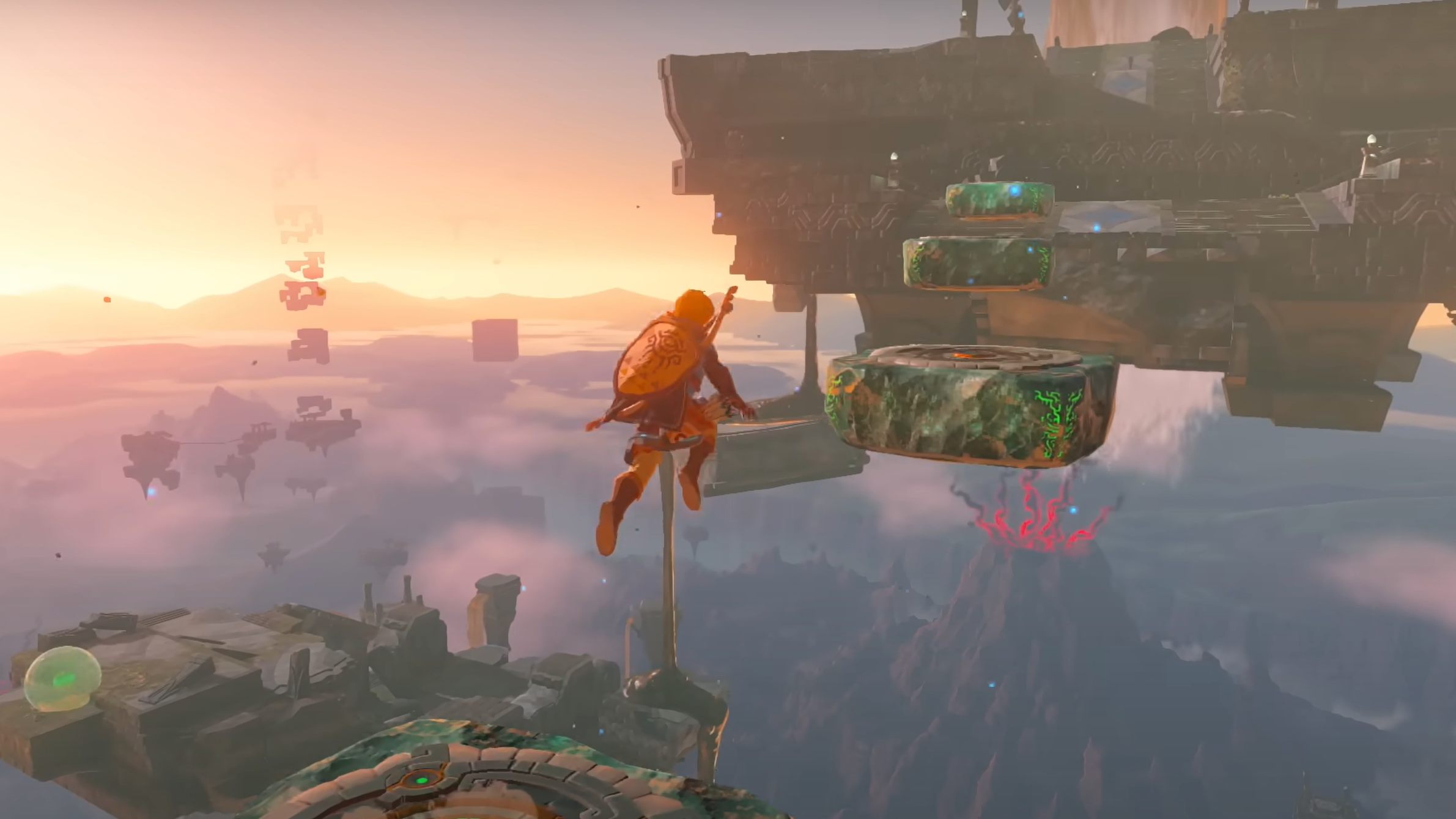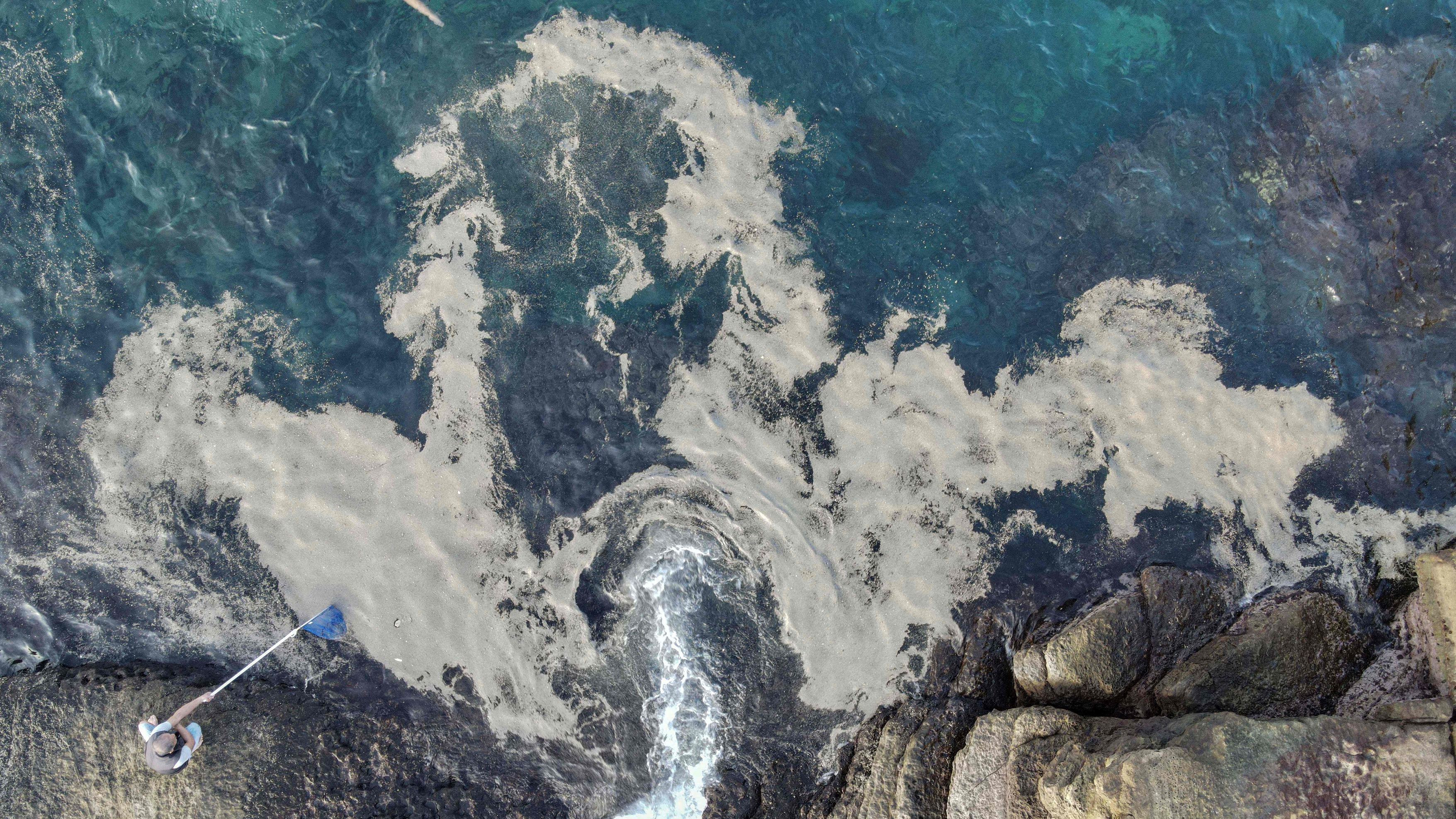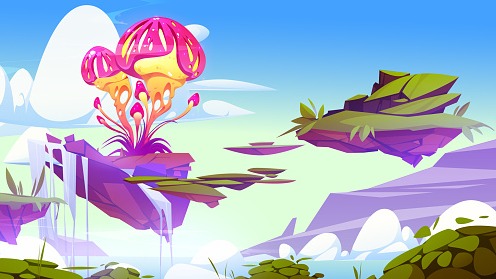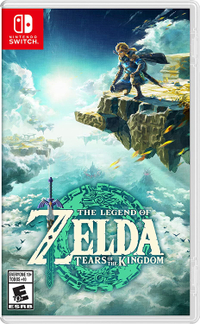Could the floating islands in 'The Legend of Zelda: Tears of the Kingdom' exist?
'The environment on Hyrule looks very Earth-like in a lot of ways.'

The newest Zelda game sees the intrepid hero Link hop between sky islands.
Zelda: Tears of the Kingdom (TOTK), which dropped for Nintendo Switch on Friday (May 12), features incredible floating islands and platforms to explore. It's not the first time Link soared into the sky during a Zelda game, but TOTK adds extra flair with new machinery for soaring and exploring. (Minor plot spoilers are below.)
Floating islands are long-standing tropes in science fiction books and plots. Avatar, Astro Boy and Elysium brought these flying worlds to our screens. Buckminster Fuller, Jonathan Swift and Isaac Asimov wrote about them in incredible stories. But what about in real life? Do floating islands exist on Earth, or other planets?
Alex Parker, a research scientist at the SETI (Search for Extraterrestrial Institute), says there are at least three different kinds of floating islands to consider: Geological, biological and technological. Parker is now building a company to generate artificial floating islands at sea based on the peer-reviewed research exploring floaters on Earth and on alien worlds.
Related: Best space games 2023: Outer Wilds, No Man's Sky, Kerbal Space Program and more
Flying high above Hyrule
The first of the Zelda series, "The Legend of Zelda", was released in 1986. The iconic video game franchise has nearly 25 versions to explore in the U.S. alone (when including the remastered ones), according to IGN.
The universe's canon tends to morph between games, but in general, storylines focus on the Princess Zelda, her loyal companion Link, and their brave actions to protect the kingdom of Hyrule from some existential threat. (Ancient aliens appear to form part of the new plotline, too, based on the beginning sequence.)
Get the Space.com Newsletter
Breaking space news, the latest updates on rocket launches, skywatching events and more!
Parker, who is aware of the Zelda series but never played it, told Space.com the concept art and videos he has seen suggests Hyrule looks similar to Earth: Link's movements indicate a terrestrial world, with fairly similar gravity and atmosphere.
While Hyrule is a mythological kingdom, Earth does have floating islands of its own in the water. Geological ones can include icebergs, or pumice rafts of porous rock during huge eruptions of volcanoes. Icebergs eventually dissolve, however, and volcanic rafts are also temporary as "they eventually become waterlogged and sink," Parker said.
Biological floating islands may occur on lakes or in bogs, formed when water plants clump together. Parker described these ecosystems as "vegetative maps that have root systems running through them." Since plants are always growing and adapting from their environment, they can last for long periods of time, through "regrowth and refreshment", he said, adding, "It's sort of an active structure."
Related: Scientists grow 1st plants in moon soil
The Legend of Zelda: Tears of the Kingdom - Nintendo Switch | $69.99 $64.95 on Amazon
Save 7% on "he Legend of Zelda: Tears of the Kingdom, which continues the epic journeys of Zelda and Link with brand-new capabilities. Explore floating islands with wild new machines while rescuing Hyrule from a great danger.
So those are natural floating islands on Earth, but what about other planets? Could alien worlds see Hyrule-like floating islands in the sky absent spacecraft or other floating vessels? Parker says it's hard to imagine.
For a geological island, you would need a solid substance that could trap a gas that would allow the island to float, he said; in other words, the gas would need to be of lower density or higher temperature than the surrounding atmosphere.
"There are these porous materials like aerogels, graphene, silica aerogel: Very, very low density structures that are basically vessels of air," Parker said. "If you could get those vessels to be full of a different gas — like helium or hydrogen or methane — or be very warm, then maybe you could get one to lift in the atmosphere."
Parker added there have been demonstrations of solids floating in a quite dense gas, such as sulfur hexafluoride. The trouble is, the geological islands would tend to diffuse over time unless there was a process that keeps renewing the gas. Parker added, however, that he doesn't want to make assumptions given "there's all sorts of bizarre geology in the universe."
Related: 15 stunning places on Earth that look like they're from another planet

'Life finds a way'
Biological islands may have more possibility. "To quote a line from Jurassic Park, 'Life finds a way,' " Parker said. "When you go into the forest ecosystem (on Earth), trees seek height. They grow tall to try to outcompete their neighboring organisms for access to sunlight."
Taking that competition to an extreme, Parker says it's possible that plants on other worlds may create floating islands in the atmosphere, trapping gasses in the root system via large, open vessels. Looking to our own planet for possible gasses, methane and hydrogen are abundant in organisms on Earth. Here, both these gases are less dense than our own atmosphere.
By association, maybe other planets could produce a "persistently buoyant structure", as long as something is feeding the plants to continue producing these gases, Parker said. On Venus, which has a thick atmosphere, this might be easy to imagine. There have even been studies about huge gas giant planets like Jupiter; one example is a 1976 paper co-authored by renowned SETI researcher Carl Sagan.
Wherever these organisms may reside, size matters: Since lift is determined by available volume, but weight only comes from the skin of a structure, bigger biological islands would have more buoyant hollow voids.
That said: "It's not a very efficient structure for designing a lifting system," Parker said. "So you would probably prefer to think about structures that have large open voids inside them, the larger the better, that are being constantly refilled with some kind of lifting gas over time."
Related: 'Alien burp' may have been detected on Mars by NASA's Curiosity rover

'Cloud Nine' and floating settlements
Of course, there are also artificial floating islands that you can build on such worlds, and these ideas are as wild as science fiction (or science fact) can imagine them. NASA researchers have envisioned putting in cities in the clouds of Venus, for example, where the atmosphere is much more temperate or Earth-like than the volcano-strewn world below.
Decades ago, Buckminster Fuller envisioned a kind of structure called a geodesic dome, which eventually evolved into a concept known as Cloud Nine. Simply put, Fuller thought future planet settlements could create airborne habitats that would stay above the rugged surface of an alien world. The settlements would stay aloft thanks to heating the air inside, above the temperature of the atmosphere.
Closer to home, Parker's new company (Flöt Co., pronounced "Float") is working on building ocean-borne 3D printers on concrete to construct huge structures at sea, like huge wind turbines. "The goal is to enable the construction of the next generation of offshore infrastructure that's necessary for climate change, adaptation and mitigation," Parker said.
The company created its first small-scale prototype last month, fabricating a buoyant structure directly in the ocean with an autonomous robot. Pending funding and time, the hope is to develop the tech on a more commercial scale, transforming decommissioned oil rigs into platforms for robotic fabrication in the next decade or so.
Related: Swarms of tiny robots may one day explore oceans on other worlds
Meanwhile, a notable space-related mechanic of Zelda: Breath of the Wild is making a big comeback in the new game: the blood moon. Every seven days in-game, the blood moon rises and resets all the monsters that you defeated, giving you a chance to pick up the gear you need for leveling up.
In real life, blood moons do happen when the moon passes into the shadow of the Earth during a total lunar eclipse. The last total lunar eclipse was on November 8, 2022, while the next one will happen on March 13/14, 2025.
Since you have nearly two years to prepare, be sure to check out our guide on how to photograph a lunar eclipse. For other real-life sights in the night sky, check out our guides on on how to photograph the moon, and our rundowns on the best cameras for astrophotography and best lenses for astrophotography.
Join our Space Forums to keep talking space on the latest missions, night sky and more! And if you have a news tip, correction or comment, let us know at: community@space.com.

Elizabeth Howell (she/her), Ph.D., was a staff writer in the spaceflight channel between 2022 and 2024 specializing in Canadian space news. She was contributing writer for Space.com for 10 years from 2012 to 2024. Elizabeth's reporting includes multiple exclusives with the White House, leading world coverage about a lost-and-found space tomato on the International Space Station, witnessing five human spaceflight launches on two continents, flying parabolic, working inside a spacesuit, and participating in a simulated Mars mission. Her latest book, "Why Am I Taller?" (ECW Press, 2022) is co-written with astronaut Dave Williams.
It's always a pleasure to meet a new Lego Star Wars set, as Jango Fett’s Firespray-Class Starship drops in for Star Wars Day
'I Have No Mouth, and I Must Scream' celebrates 30 years with a console port, ready to traumatise a whole new generation with its tales of a mad AI god










